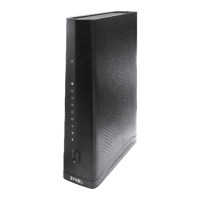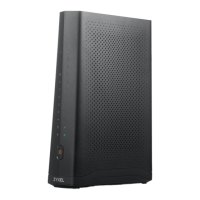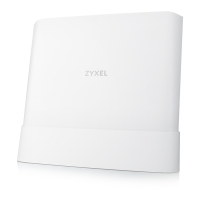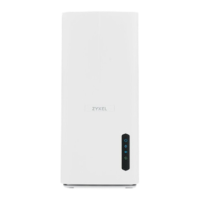Chapter 20 Bandwidth Management
EMG3425-Q10A User’s Guide
142
20.6 Technical Reference
The following section contains additional technical information about the EMG3425-Q10A features
described in this chapter.
IEEE 802.1Q Tag
The IEEE 802.1Q standard defines an explicit VLAN tag in the MAC header to identify the VLAN
membership of a frame across bridges. A VLAN tag includes the 12-bit VLAN ID and 3-bit user
priority. The VLAN ID associates a frame with a specific VLAN and provides the information that
devices need to process the frame across the network.
IEEE 802.1p specifies the user priority field and defines up to eight separate traffic types. The
following table describes the traffic types defined in the IEEE 802.1d standard (which incorporates
the 802.1p).
VLAN ID If you select Remark, enter a VLAN ID number with which the EMG3425-Q10A replaces the
VLAN ID of the frames.
If you select Remove, the EMG3425-Q10A deletes the VLAN ID of the frames before
forwarding them out.
If you select Add, the EMG3425-Q10A treat all matched traffic untagged and add a second
VLAN ID.
If you select Unchange, the EMG3425-Q10A keep the VLAN ID in the packets.
Step 4: Outgoing queue selection
To Queue Index Select a queue that applies to this class.
You should have configured a queue in the Queue Setup screen already.
Back Click this to return to the previous screen.
Apply Click this to save your changes.
Cancel Click this to exit this screen without saving.
Table 60 Management > Bandwidth MGMT > Class Setup: Add/Edit new class
LABEL DESCRIPTION
Table 61 IEEE 802.1p Priority Level and Traffic Type
PRIORITY
LEVEL
TRAFFIC TYPE
Level 7 Typically used for network control traffic such as router configuration messages.
Level 6 Typically used for voice traffic that is especially sensitive to jitter (jitter is the variations in
delay).
Level 5 Typically used for video that consumes high bandwidth and is sensitive to jitter.
Level 4 Typically used for controlled load, latency-sensitive traffic such as SNA (Systems Network
Architecture) transactions.
Level 3 Typically used for “excellent effort” or better than best effort and would include important
business traffic that can tolerate some delay.
Level 2 This is for “spare bandwidth”.
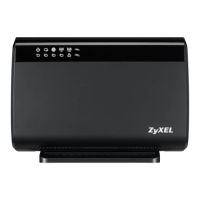
